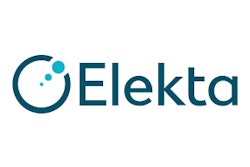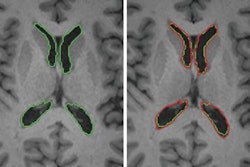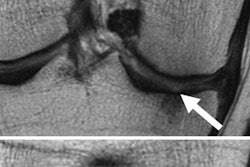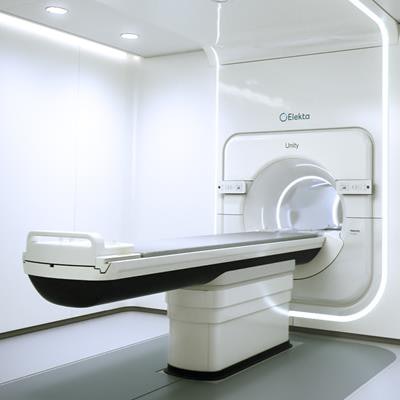
Radiation oncology vendor Elekta is using this week's annual meeting of the European Society for Radiotherapy and Oncology (ESTRO) to launch Elekta Unity, the company's MRI-guided radiation therapy system.
Elekta Unity combines a diagnostic-quality 1.5-telsa MRI scanner with a linear accelerator (linac) to provide MRI-guided radiation therapy treatments. The system is the first offering from Elekta to combine MRI with a linac.
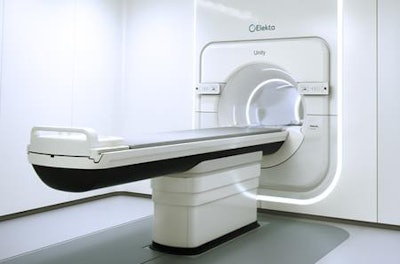 Elekta Unity provides real-time MR imaging during radiation therapy. Image courtesy of Elekta.
Elekta Unity provides real-time MR imaging during radiation therapy. Image courtesy of Elekta.Imaging historically has been used in radiation therapy by scanning patients and using images to develop treatment plans. But slight changes can occur in the days between when these reference images are acquired and when radiation therapy actually takes place.
Vendors have developed on-board imaging modules to perform real-time imaging during treatment sessions that can detect changes between when reference images were acquired and the treatment session. But these images are typically obtained with conebeam CT, which may not be the best choice for cancers in soft tissue.
MRI could be a better choice for these cancers, but there are inherent problems in operating a radiation therapy system within the magnetic field of the MRI environment. For example, linacs produce high levels of radiofrequency (RF) noise thanks to their powerful generators, which can interfere with an MRI scanner's sensitive RF coils. Meanwhile, linacs are very sensitive to magnetic fields, which are inherent in the operation of MRI systems.
In 2012, Elekta began working with Philips Healthcare and University Medical Center Utrecht in the Netherlands to develop a system in which the linac was isolated from the magnetic field of the MRI scanner, according to Kevin Brown, global vice president for scientific research at Elekta. Researchers at the university had begun working on the technology 18 years ago.
In addition to real-time imaging during treatment, Elekta Unity will be able to provide functional MR information, which could help detect whether a tumor is responding to treatment at an early stage. Daily imaging with the system could also help target tumors and spare healthy tissues. Elekta Unity may also able enable the use of higher doses over fewer treatment sessions.
Elekta believes the system will be particularly useful for cancers of the soft tissue; while CBCT is a great option for visualizing high-contrast areas such as bone, MRI is best suited for areas with more soft tissue. Elekta Unity features a 70-cm bore, a soft tabletop, nonglare room lighting, and a table with a low load height.
The company has shipped six precommercial systems so far, with a few more expected to ship by the end of calendar 2017. The first regulatory approvals are expected by the end of the calendar year, Brown said.





